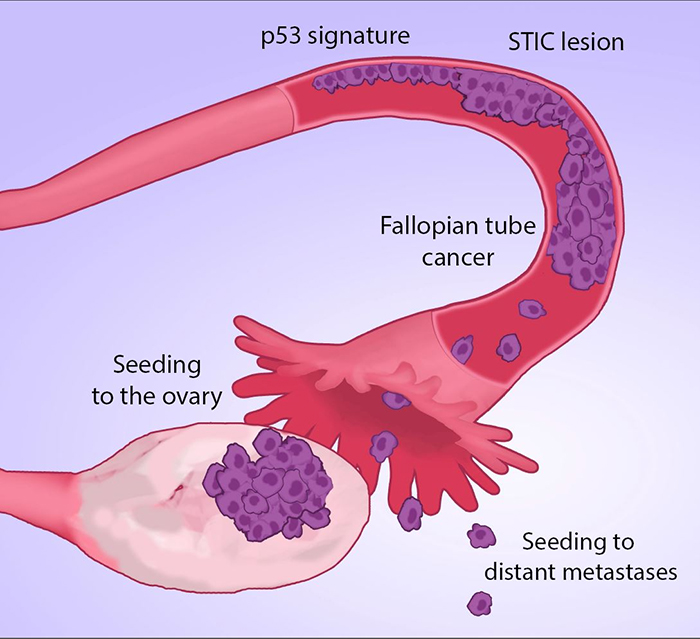A new study looking at how ovarian cancer starts has suggested it takes hold in the fallopian tubes, between the ovaries and the uterus, rather than in the ovaries themselves.
This discovery could transform the way we detect and treat this deadly disease. Ovarian cancer is notoriously hard to catch early and is usually well-developed by the time it's discovered - so catching it earlier could be crucial in saving lives.
The international team of researchers behind the study emphasises that these are just preliminary findings – based on tissue samples from only nine women – but if the results are confirmed in larger studies, we will have a vastly improved method of attack for this type of cancer.
"Ovarian cancer treatments have not changed much in many decades, and this may be, in part, because we have been studying the wrong tissue of origin for these cancers," says senior researcher Victor Velculescu, from the Johns Hopkins Kimmel Cancer Center in Maryland.
"If studies in larger groups of women confirm our finding that the fallopian tubes are the site of origin of most ovarian cancer, then this could result in a major change in the way we manage this disease for patients at risk."
Scientists have suspected ovarian cancer might start in the fallopian tubes for several years, and now they have some real evidence to back it up, albeit from a small sample size.
To test their idea, the researchers collected tissue samples from five women who had been diagnosed with high-grade serous ovarian carcinoma, and four who had had their ovaries removed due to being at a high genetic risk of developing the disease.
The samples included normal cells, ovarian cancer cells, small cancers from the fallopian tubes, and cancerous cells that had spread elsewhere.
Importantly, the cancerous samples included single cell layers known as p53 signatures, thought to be one of the tell-tale warning signs of many cancer types, and Serous Tubal Intraepithelial Carcinoma (STIC) lesions, which experts have suspected can lead to ovarian cancer.
When ovarian cancer is detected, it's usually gone so far down the line that researchers have a hard time actually working out where it started.
Using staining and infrared laser techniques, the researchers were able to isolate and extract the small number of cancer cells found in the fallopian tubes. Then they used genome sequencing to catalogue the protein-coding genes present in the cells' DNA.
The end result was a series of DNA sequences relating only to the cancer cells rather than normal cells, allowing the team to examine them for biological coding mistakes.
 How cancer cells, shown in purple, 'seed' from the fallopian tube. (Carolyn Hruban)
How cancer cells, shown in purple, 'seed' from the fallopian tube. (Carolyn Hruban)
Cancer cells from all nine patients had lost identical regions of chromosome 17, which happens to be where the p53 gene is located. In other words, it looks like a flaw in the p53 gene is one of the early stages of ovarian cancer development.
What's more, by reasoning that the earliest cancer cells would have fewer mutations, the researchers were able to link the disease with the early-stage STIC lesions in the fallopian tubes of the five women who had been diagnosed with ovarian cancer.
The researchers describe their discovery as a "seeding event" in the fallopian tubes that already contains the genetic mutations that cause ovarian cancer.
Further statistical analysis showed the tumours developed quickly once they reached the ovaries, something backed up by clinical diagnosis.
Treatments and screenings are unlikely to change in the short term until this study can be replicated at a larger scale, but we potentially have a way of spotting ovarian cancer years earlier and saving lives – as well as offering alternatives for those at genetic risk besides removing the ovaries.
With ovarian cancer the fifth most deadly among women, and 10-year survival rates below 30 percent, thousands of lives could be saved each year if we can catch ovarian cancer – or maybe fallopian tube cancer – earlier.
"The window of time that exists between the development of a STIC lesion and metastatic disease highlights the importance of new screening approaches such as liquid biopsy methods for early detection of ovarian cancer," says Velculescu.
The research has been published in Nature Communications.
